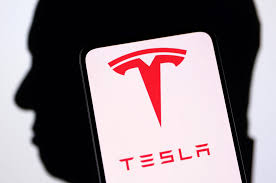
Tesla is preparing to introduce a more affordable version of its popular Model Y SUV, signaling a major strategic shift. Rather than simply reigniting lagging sales, the move reflects deeper pressures—from intensifying competition from Chinese EV makers to tactical ambitions in markets like India. Below is an in-depth look at why and how Tesla is executing this pivot, and how it ties into its global positioning.
Driving Forces Behind the Push for Affordability
Tesla’s current lineup has long commanded premium pricing, but in key regions its lead is eroding. The vehicle market is more crowded now, and Tesla’s aging portfolio has struggled to maintain headroom. In China, its market share has slipped in the face of domestic rivals launching sleek, value-oriented models. To defend its relevance, Tesla initiated Project “E41”—a streamlined Model Y variant aimed at reducing production cost by at least 20 percent.
This lower-cost Model Y is to be built using existing platforms, trimming features and streamlining designs to reduce complexity and thus cost. The goal is to undercut the $30,000 effective threshold (when combining EV incentives) that Elon Musk has often cited. By doing so, Tesla hopes to capture demand from buyers who find current models just out of reach.
In addition, with U.S. Federal EV tax credits having lapsed (in effect raising net prices) and macroeconomic pressures on consumer spending, an entry-level version is a tactical lever to push uptake. Musk has publicly commented that many potential buyers “do not have enough money in the bank account,” reinforcing the idea that affordability is becoming a gating factor.
How Tesla Plans to Build Leaner
To deliver on this vision, Tesla is not reinventing the wheel—but optimizing it. The approach involves:
These moves are designed not to dilute the Tesla brand but to expand its addressable market. If successful, a leaner Model Y could become Tesla’s volume pivot going forward.
Competitive Pressures from China and Europe
One of the key reasons Tesla is under pressure is the rise of efficient Chinese EV makers, both at home and abroad. In Europe, brands like BYD have gained momentum by offering comparable features at lower prices, challenging Tesla’s value premium. In 2025, Tesla saw significant declines in EU sales—some reports showing a drop of over 40 percent year-on-year—while competitors surged.
Chinese EV makers benefit from lower labor, logistics, and production costs, alongside aggressive scale and innovation in battery technology. Tesla’s move toward a more affordable model is a countermeasure: it needs to claim ground in the segment where Chinese automakers have strength—affordability without sacrificing core functionality.
Moreover, brand perception has become a factor. Musk’s public statements and polarizing affiliations have, in some regions, dampened loyalty. Amid these headwinds, price sensitivity becomes an even more decisive factor. The lower-cost Model Y is Tesla’s bet that it can restore momentum by making Tesla ownership more accessible.
Strategic Stakes in India and Emerging Markets
Tesla’s entry into India in mid-2025 sets the stage for its most audacious test yet. So far, its penetration has been limited: showrooms in Delhi and Mumbai, and modest delivery volumes. The company faced an import tax of up to 70 percent, pushing the Model Y price into ultra-premium territory in a price-sensitive market. As a result, booking response has been muted—reports indicate only a few hundred orders in the early phase.
This is where a lower-cost Model Y becomes strategically vital. If Tesla can bring a version closer to locally affordable brackets, it gains a chance to convert India from a showroom experiment into a meaningful growth front. Pricing that shrinks the import-tax‐inflated delta could unlock buyer segments that currently find Tesla out of reach.
So, while Tesla hasn’t confirmed that this model is India-tailored, the timing and logic point strongly in that direction. A successful roll-out in India could also serve as a beachhead for deploying similarly priced variants in Southeast Asia, Latin America, or other emerging regions.
Tesla’s gambit carries significant challenges. Dropping price without eroding brand cachet is a tightrope walk. Buyers accustomed to Tesla’s premium positioning may balk at stripped-down versions. Execution missteps—supplier issues, quality defects, range shortfalls—could damage reputation.
Technology and engineering discipline will be critical. Tesla must maintain core performance metrics, battery life, reliability, and charging infrastructure to sustain its edge. Moreover, supply chain and global cost dynamics matter; shifting inputs, tariffs, or labor costs could eat into margins fast.
Another risk is cannibalization. A cheaper Model Y could cut into sales of existing higher-margin versions. To manage this, Tesla will need clear differentiation in features, warranties, or trim hierarchies.
Tesla’s push toward a lower-cost Model Y is more than a product tweek—it is a strategic reset for a maturing EV ecosystem. By responding to Chinese competition, macro pricing pressures, and market entry challenges like India, Tesla is attempting to recast its growth runway. For now, the industry watches whether the execution lives up to the ambition—and whether Tesla can reclaim the value leadership in a market increasingly defined by affordability.
(Source:www.marketscreener.com)
Driving Forces Behind the Push for Affordability
Tesla’s current lineup has long commanded premium pricing, but in key regions its lead is eroding. The vehicle market is more crowded now, and Tesla’s aging portfolio has struggled to maintain headroom. In China, its market share has slipped in the face of domestic rivals launching sleek, value-oriented models. To defend its relevance, Tesla initiated Project “E41”—a streamlined Model Y variant aimed at reducing production cost by at least 20 percent.
This lower-cost Model Y is to be built using existing platforms, trimming features and streamlining designs to reduce complexity and thus cost. The goal is to undercut the $30,000 effective threshold (when combining EV incentives) that Elon Musk has often cited. By doing so, Tesla hopes to capture demand from buyers who find current models just out of reach.
In addition, with U.S. Federal EV tax credits having lapsed (in effect raising net prices) and macroeconomic pressures on consumer spending, an entry-level version is a tactical lever to push uptake. Musk has publicly commented that many potential buyers “do not have enough money in the bank account,” reinforcing the idea that affordability is becoming a gating factor.
How Tesla Plans to Build Leaner
To deliver on this vision, Tesla is not reinventing the wheel—but optimizing it. The approach involves:
- Platform reuse: The low-cost Model Y will be built on Tesla’s existing tooling and architecture, minimizing new R&D and capital investment.
- Feature simplification (“de-spec’ing”): Nonessential features—ambient lighting, elaborate upholstery, secondary touchscreens, or premium materials—may be removed or scaled back.
- Localization and scale synergies: Leading production is expected at Tesla’s Shanghai Gigafactory, with spillovers into Europe and North America, leveraging existing capacity.
- Operational efficiencies: Simplified supply chains, vertical integration of parts, and tighter cost controls will be essential to shave margin buffers.
- Optimized layouts: Tesla may reduce component variety and adopt modular designs to compress engineering complexity and drive economies of scale.
These moves are designed not to dilute the Tesla brand but to expand its addressable market. If successful, a leaner Model Y could become Tesla’s volume pivot going forward.
Competitive Pressures from China and Europe
One of the key reasons Tesla is under pressure is the rise of efficient Chinese EV makers, both at home and abroad. In Europe, brands like BYD have gained momentum by offering comparable features at lower prices, challenging Tesla’s value premium. In 2025, Tesla saw significant declines in EU sales—some reports showing a drop of over 40 percent year-on-year—while competitors surged.
Chinese EV makers benefit from lower labor, logistics, and production costs, alongside aggressive scale and innovation in battery technology. Tesla’s move toward a more affordable model is a countermeasure: it needs to claim ground in the segment where Chinese automakers have strength—affordability without sacrificing core functionality.
Moreover, brand perception has become a factor. Musk’s public statements and polarizing affiliations have, in some regions, dampened loyalty. Amid these headwinds, price sensitivity becomes an even more decisive factor. The lower-cost Model Y is Tesla’s bet that it can restore momentum by making Tesla ownership more accessible.
Strategic Stakes in India and Emerging Markets
Tesla’s entry into India in mid-2025 sets the stage for its most audacious test yet. So far, its penetration has been limited: showrooms in Delhi and Mumbai, and modest delivery volumes. The company faced an import tax of up to 70 percent, pushing the Model Y price into ultra-premium territory in a price-sensitive market. As a result, booking response has been muted—reports indicate only a few hundred orders in the early phase.
This is where a lower-cost Model Y becomes strategically vital. If Tesla can bring a version closer to locally affordable brackets, it gains a chance to convert India from a showroom experiment into a meaningful growth front. Pricing that shrinks the import-tax‐inflated delta could unlock buyer segments that currently find Tesla out of reach.
So, while Tesla hasn’t confirmed that this model is India-tailored, the timing and logic point strongly in that direction. A successful roll-out in India could also serve as a beachhead for deploying similarly priced variants in Southeast Asia, Latin America, or other emerging regions.
Tesla’s gambit carries significant challenges. Dropping price without eroding brand cachet is a tightrope walk. Buyers accustomed to Tesla’s premium positioning may balk at stripped-down versions. Execution missteps—supplier issues, quality defects, range shortfalls—could damage reputation.
Technology and engineering discipline will be critical. Tesla must maintain core performance metrics, battery life, reliability, and charging infrastructure to sustain its edge. Moreover, supply chain and global cost dynamics matter; shifting inputs, tariffs, or labor costs could eat into margins fast.
Another risk is cannibalization. A cheaper Model Y could cut into sales of existing higher-margin versions. To manage this, Tesla will need clear differentiation in features, warranties, or trim hierarchies.
Tesla’s push toward a lower-cost Model Y is more than a product tweek—it is a strategic reset for a maturing EV ecosystem. By responding to Chinese competition, macro pricing pressures, and market entry challenges like India, Tesla is attempting to recast its growth runway. For now, the industry watches whether the execution lives up to the ambition—and whether Tesla can reclaim the value leadership in a market increasingly defined by affordability.
(Source:www.marketscreener.com)





